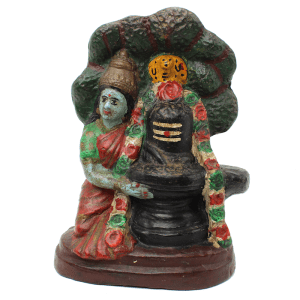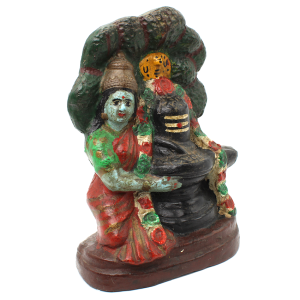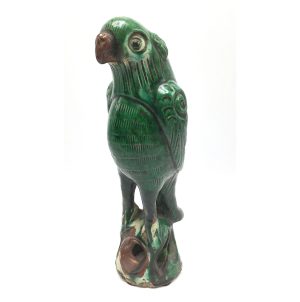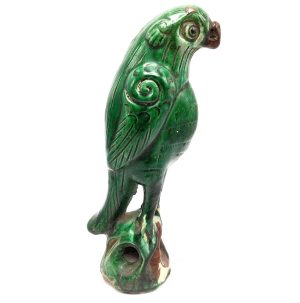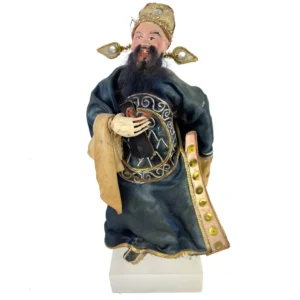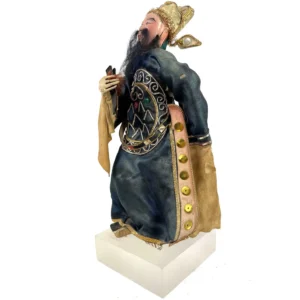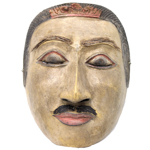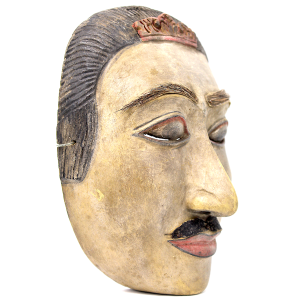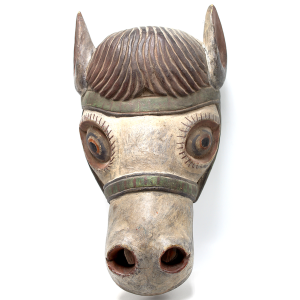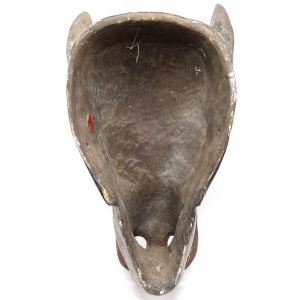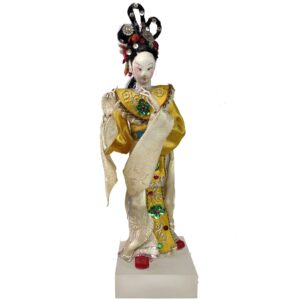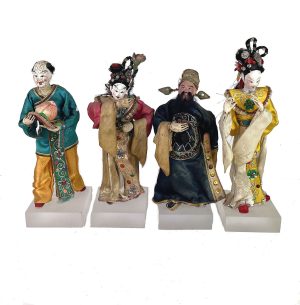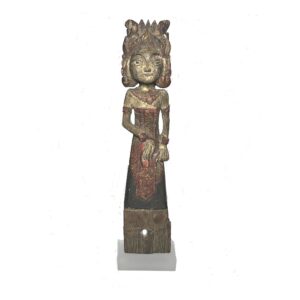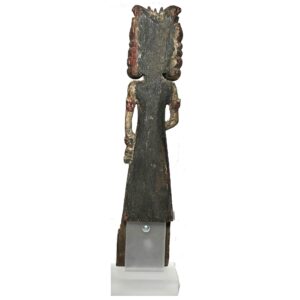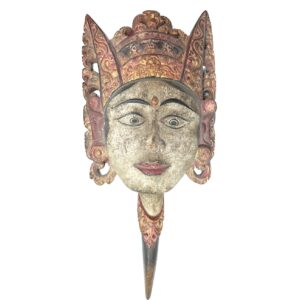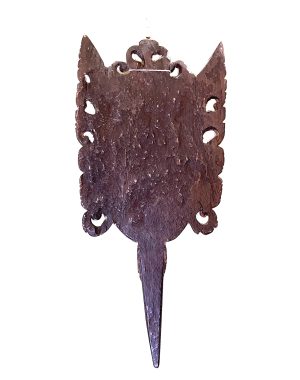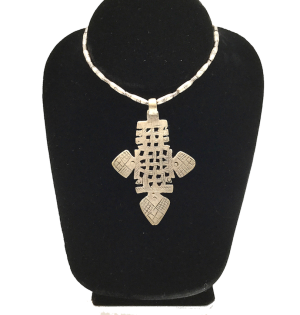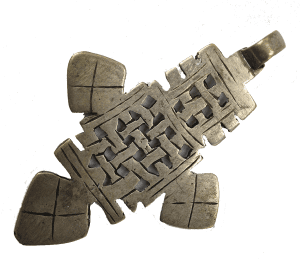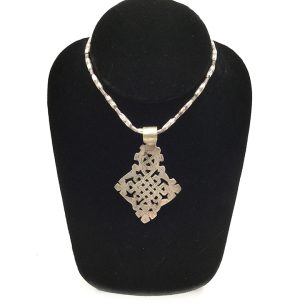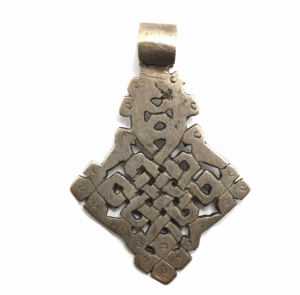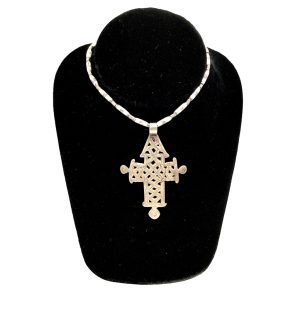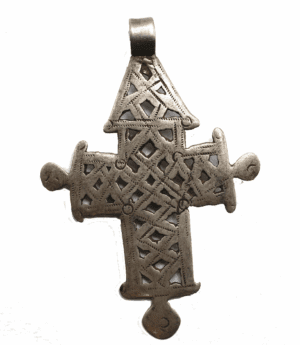Showing 169–180 of 203 results
-
Sale!


$165.00 Original price was: $165.00.$110.00Current price is: $110.00.
H: 8″ W: 6″ D: 6″ | FREE SHIPPING WITHIN CONTINENTAL U.S.
This colorful terracotta image of Shiva and Parvati is aniconic (symbolic) and figurative. Shiva’s is a symbolic lingham (phallus) and Parvati a deity. Together they represent the union of masculine and feminine, thus all existence
-


$295.00
SOLD H: 9″ W: 3 ” D: 3.5 ” | FREE SHIPPING!
Chinese Republic ceramic parrots are commonly depiction as this one perched on an open rocky base. Porcelain parrots were produced for the domestic and export markets and sometimes sold in pairs leading some to believe they, like pairs of fish, symbolized the love and fidelity of married couples. This one has vivid polychrome colors, large eyes and stylized wings. This piece is in excellent condition.
-
Sale!


$195.00 Original price was: $195.00.$135.00Current price is: $135.00.
Ht: 8.75″ D: 4″ D: 3.125″ | FREE SHIPPING within Continental U.S.
Colorful bearded official/entertainer doll with traditional hat, dark blue and gold robe holding paper clappers castanets. Mounted on lucite.
-


$105.00
This Dalem is a traditional folk-art and ethnic mask (topeng) from Bali made from pulai wood of a Hindu king (Dalem). He stares directly at the viewer while his high cheeks help express his poise and the ability to remain cool in a crisis. This is a fine example of a gifted carver able to…
-
Sale!


$325.00 Original price was: $325.00.$210.00Current price is: $210.00.
H: 13.5″ W: 7.5″ D: 5″ | FREE SHIPPING WITHIN CONTINENTAL U.S.
Used in ritual Cham Dances, this whimsical and colorful mask emphasizes the horses playful character, alertness and strength with large eyes, painted lashes, wide raised lids, flaring nostrils, open mouth and pointed ears framed by beautifully carved rows of black hair.
-
Sale!


$195.00 Original price was: $195.00.$135.00Current price is: $135.00.
H: 10.5 ” W: 3.5 ” D: 3.125″ | FREE SHIPPING WITHIN CONTINENTAL U.S.
Charming Chinese Nuo Opera dancer wearing a costume with 5-petal plum blossoms symbolizing a wish for the Five Happinesses: prosperity, long life, health, a virtuous life and natural death.
-
Sale!


$395.00 Original price was: $395.00.$325.00Current price is: $325.00.
Ht: 14.5” W: 3.5” D: 2.25” | FREE SHIPPING WITHIN CONTINENTAL U.S
Rare vintage carving dedicated to Dewi Sri, Balinese Goddess of Rice. was probably made for a home shrine or small rice field temple . Hole near the bottom indicates it may have been part of a larger decorative scheme.
-
Sale!


$295.00 Original price was: $295.00.$225.00Current price is: $225.00.
H: 14.5″ W: 6.625″ D: 2.375″ | FREE SHIPPING WITHIN CONTINENTAL US
Rare and very fine vintage woodcarving of Dewi Sri Balinese Hindu goddess of rice and prosperity in excellent condition considering it is a much used piece. Depicted as a young, attractive and fertile woman with highly decorative headdress. Can be mounted on a wall.
-
Sale!


$125.00 Original price was: $125.00.$105.00Current price is: $105.00.
Ht: 3.25 W: 1.625″ | FREE SHIPPING WITHIN CONTINENTAL U.S.
Large and heavy vintage one-of-a-kind lost wax Axum cross with a never-ending knot and flared arms with modified rectangles representing the Ark of the Covenant.
-
Sale!


$125.00 Original price was: $125.00.$105.00Current price is: $105.00.
H: 2” W: 1.625″ | FREE SHIPPING WITHIN CONTINENTAL U.S.
Vintage coin silver cross decorated with circle with radiating arms represents eternity, Christ’s halo and infinite love, and resurrection. Etched circles are apotropaic “protective eyes” to thwart evil and bad luck. Lost wax one-of-a-kind piece.
-
Sale!


$135.00 Original price was: $135.00.$110.00Current price is: $110.00.
H: 2.375” W: 1.875″ | FREE SHIPPING WITHIN CONTINENTAL U.S.
Large, heavy antique Ethiopian Cross designed in 2 parts: a top etched circle and bottom a tri-partite design depicting the Trinity. Birds transform the Cross into the Tree of Life, the “True Cross,” and lineage of Ethiopian people to biblical Queen of Sheba.
-
Sale!


$125.00 Original price was: $125.00.$105.00Current price is: $105.00.
Ht: 3″ W: 2.62″ | FREE SHIPPING WITHIN CONTINENTAL U.S.
Pendant cross with pierced “endless knot.” Use of “positive and negative space” highlights dualities: materiality/immateriality; body/soul’s nourishment; spiritual/physical salvation; union of humanity and Christ’s divinity..
End of content
End of content

